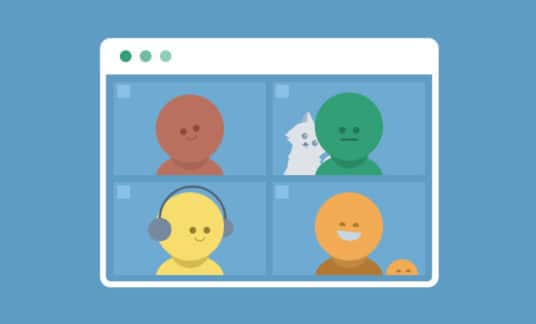From new sick leave policies to performance reviews, human resource (HR) teams had to adapt quickly to the disruptions of 2020.
HR issues often revolve around the same topics year after year. But your approach can and should change.
Here are 9 ways to overcome the top HR challenges.
Top Human Resource Challenges Today
The previous year interrupted the regular duties of human resource management (HRM): employing, training, paying and retaining employees.
Research from Reward Gateway, an employee engagement company, finds, “71% of HR leaders say 2020 has been the most stressful year of their career.”
However, these complications didn’t go away when the calendar flipped over to 2021. Instead, business owners expect teams to develop modern solutions to HR problems.
Ongoing human resource issues in companies include:
- Finding, hiring and training employees
- Managing employee performance
- Addressing benefits and compensation
- Gathering real-time workforce data
- Developing and diversifying leadership
- Engaging and retaining employees
- Navigating employee and organizational well-being efforts
- Ensuring technology supports workflows
1. Embrace Emotional, Physical and Mental Well-Being
The 2021 Deloitte Global Human Capital Trends report finds 7 in 10 executives say ” their organization’s shift to remote work had a positive impact on well-being.” But 20% of HR executives think well-being is a priority.
Improvement to employee well-being can enhance your business. It can bolster your brand reputation and customers while driving innovation and resiliency.
Build well-being into your company at all levels, including:
- Individual: Get employees involved in policy development. Ask for feedback and find ways to support mental health while meeting wellness objectives.
- Teams: Encourage groups to explore new collaboration solutions. Promote inclusivity by recognizing various capabilities and working preferences.
- Organizational: Well-being affects your bottom line. Before making decisions, consider its role. Ask if your choice reflects your commitment to employee health.
- Culture: Ensure your remote culture echoes your mission and values. Activities should allow for team member differences while tying back to your main goals.

2. Re-Imagine Employee Recruitment and Retention
New job candidate expectations coupled with virtual systems can affect your ability to find and hire top talent.
According to XpertHR’s Survey of HR Challenges for 2021, 66% of survey respondents said “recruiting and hiring will be somewhat or very challenging.”
Monster’s The Future of Work report identifies 5 key areas that applicants expect employers to address:
- Flexible work schedules, including flex days for sick or personal matters
- Salary protection via insurance policies
- Workplace safety through health policies and protocols
- Training, upskilling and reskilling opportunities
- Remote work options
Tackling these human resource problems requires a layered approach.
First, transparency is critical. Your hiring materials and interview style should match the reality of working for your business. Variations can cost you a new hire or result in a poor review on employment sites, such as Glassdoor.
Next, it’s time to revamp your job descriptions. Technologies and tasks may have changed in 2020. Position details should highlight expectations and focus on outcomes.
Lastly, an influx of new applications and virtual interviews can overload HR departments. Offer resources to help hiring teams screen, assess and engage candidates remotely.
3. Improve Onboarding Programs
It’s expensive to equip employees with all the tools and knowledge needed to step into a new role. Unfortunately, many onboarding programs focus on paperwork, not people.
Improve your on-premise and virtual onboarding methods by concentrating on 3 areas:
- Inform: Set clear onboarding expectations, timelines and communication methods. Provide access to resources online, even if your new hire works on-site.
- Engage: Get feedback throughout the onboarding process. Use 30-, 60- and 90-day check-in points to ask questions and provide answers.
- Connect: Offer online and in-person social networking opportunities. Virtual coffee breaks and channel-based polls or games give newcomers a sense of your culture.
4. Focus on Leadership Development
Diverse leadership and their involvement affect your business, employees and culture.
According to Gallup’s State of the American Workplace with responses from more than 195,600 employees:
- 22% “strongly agree the leadership of their organization has a clear direction” for the company
- 15% “strongly agree the leadership of their organization makes them enthusiastic about the future”
- 13% “strongly agree the leadership of their organization communicates effectively with the rest of the organization”
A poor view of leadership can harm on-site and virtual relationships. Job-related skills are essential. But leaders also must show empathy, communicate clearly and empower teams.
Business owners can support leaders by asking for and offering feedback on remote or hybrid management methods.
5. Prioritize Workforce Training
According to Deloitte, “executives identified the ability of their people to adapt, reskill and assume new roles as the top-ranked item to navigate future disruptions.” Some 72% chose it as the “most important or second most important factor.”
Furthermore, Gartner finds “68% of HR leaders cite building critical skills and competencies for the organization as the number 1 priority for 2021.”
Although training staff can get expensive, it also pays off. According to the World Economic Forum (WEF)’s Future of Jobs Report, “an average of 66% of employers surveyed expect to get a return on investment in upskilling and reskilling within one year.”
However, HR problems can cause barriers. A lack of data about employee skill gaps may reduce the effectiveness of a training program. Plus, unfamiliarity with how to build learning into current workflows can hinder growth.
The World Economic Forum also notes that “42% of employees take up employer-supported reskilling and upskilling opportunities.”
Address these challenges by:
- Surveying staff to assess competencies and confidence levels
- Allowing employees a say in upskilling or reskilling courses
- Identifying passion projects that fit personal and business purposes
- Exploring mentorship opportunities within existing leadership
- Giving training in ways that matches individual needs, not a one-size-fits-all approach
- Offering volunteer opportunities that support employee desires and further brand reputation
- Using EdTech software or platforms to ensure consistent, accessible remote training
- Developing employee-focused campaigns promoting training opportunities
6. Redesign Workflows for Your Digital Transformation
According to Twilio’s COVID-19 Digital Engagement Report, “97% of enterprise decision-makers believe the pandemic sped up their company’s digital transformation.”
A digital transformation can improve efficiency and communication. It allows for quick problem-solving and increased transparency.
Still, fast-tracking goals can lead to oversights. Switching from paper to the cloud is great. But outdated workflows may reduce the benefits.
Your staff may use an assortment of technologies to manage projects and meet online. The repeated switching between applications reduces productivity. Also, in-house workflows don’t always translate well for online workers.
Update your processes by focusing on:
- Flexibility to support different work and learning styles
- Employee communication preferences and time-based response expectations
- How technology fits into workflows, not how workflows change to support technology
- Increasing collaboration and communication using remote methods
Systems for managing data that provide version control and employee accountability

7. Balance Benefits and Compensation
There’s a lot of chatter about offering different benefits and compensation for remote roles versus on-site positions. While some ideas have merit, this is an area to tread lightly.
There may already be friction between in-house and virtual teams. Creating disparate policies can increase conflict or result in discrimination suits.
The Owl Labs and Global Workplace Analytics (GWA) State of Remote Work 2020 identify the most important perks and benefits for employees as:
- Health insurance
- Total earnings
- Vacation policy
- Flexibility for when and where people work
- Employee wellness programs
8. Collaborate With Technology Leaders
Technology is a part of nearly every workflow and workplace practice. Integrated tools can improve employee experiences, collaboration and well-being.
Indeed, 39% of Deloitte survey respondents consider “introducing digital collaboration platforms” as vital to making virtual work sustainable.
Yet, HR issues can prevent changes from having an impact. The successful adoption of new technologies requires getting everyone onboard.
HR professionals should connect with information technology leaders to brainstorm solutions to every challenge. Doing so can help leaders identify workarounds to workflow problems or make a business case for new software tools.
9. Navigate Compliance and Regulation Concerns
Complying with ever-evolving regulations is a top HR issue, and 2021 is no different. Potential challenges include:
- Public health and safety requirements for COVID-19
- Continued decriminalization and legalization of marijuana
- An uptick in contractor use or shifting employment statuses
- Laws about predictive scheduling
- Virtual worker timekeeping rules
Changes at the state and local level may affect your substance abuse policies and pre-employment screenings. Federal or state laws regarding worker status may affect how you classify employees.
Companies need to stay on top of compliance issues to inform employees quickly and take corrective actions when required.
Using a human capital management (HCM) technology platform with built-in compliance features can help HR teams stay compliant. It’s also a good idea to get involved with local business organizations to learn about potential changes.
Recognize HR Trends and Challenges
Although HR issues exist, there is good news. The 2021 Deloitte Global Human Capital Trends survey shows 74% of HR executives feel confident or very confident in human resource’s “ability to navigate the changes required in the next three to five years,” versus 58% in 2020.
By embracing flexibility, investing in your teams and using technology to solve problems, your company can be resilient to anything 2021 throws your way.










